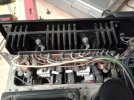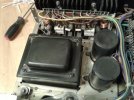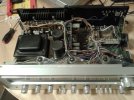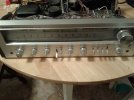D
Deleted member 48726
Guest
Inspired by the "Inside Yamaha amps" thread; Inside Yamaha amps, I think it would be cool to start one with Pioneer amplifiers.
Both Yamaha and Pioneer launched their first HiFi product in 1953 / 54. Even though Yamaha holds the highest regard with me, Pioneer comes in at second place. There really is some high quality units from the past. I must admit I haven't been keeping up to date with the newer Pioneer stuff so I am referring to the old(er) stuff.
Any pictures of Pioneer amplifiers are welcome.
This OP is really lame as I don't own any Pioneer amplifiers. -It's all up to you guys!
Both Yamaha and Pioneer launched their first HiFi product in 1953 / 54. Even though Yamaha holds the highest regard with me, Pioneer comes in at second place. There really is some high quality units from the past. I must admit I haven't been keeping up to date with the newer Pioneer stuff so I am referring to the old(er) stuff.
Any pictures of Pioneer amplifiers are welcome.
This OP is really lame as I don't own any Pioneer amplifiers. -It's all up to you guys!
















